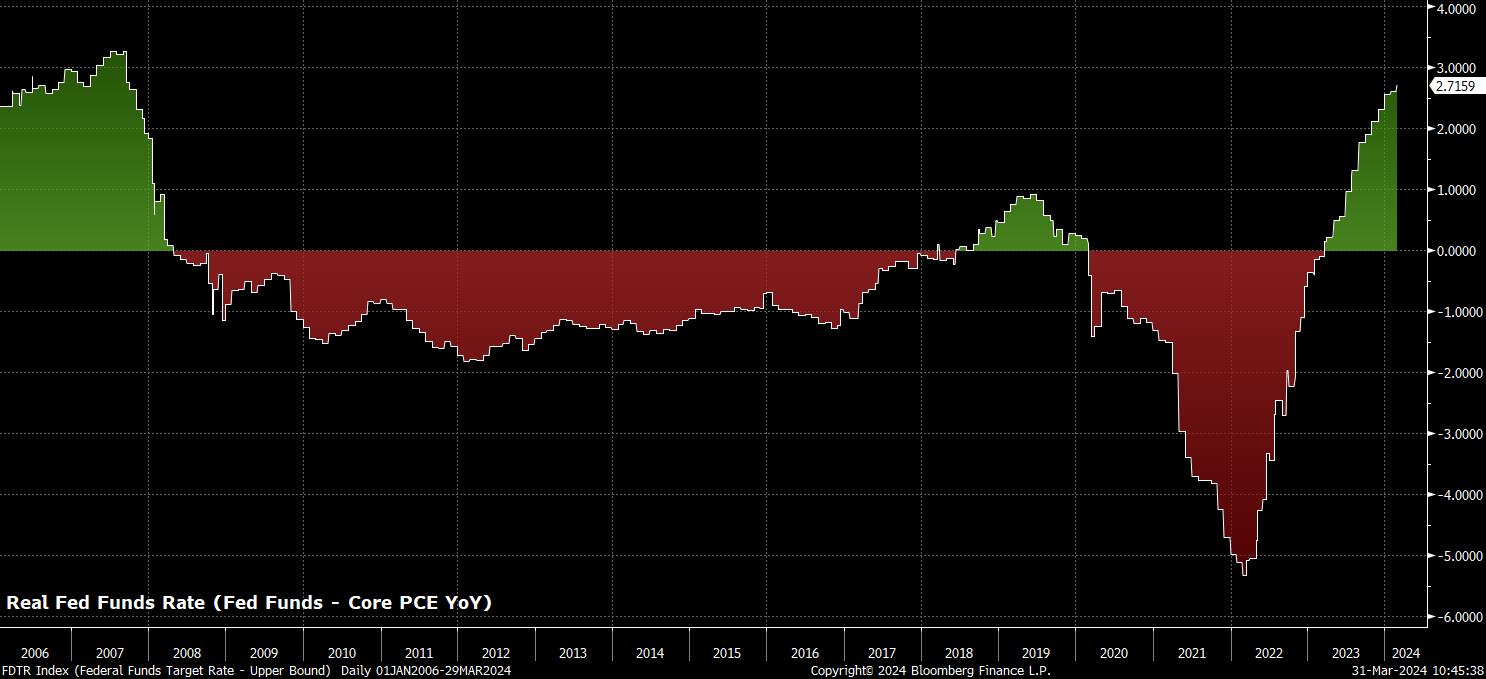Les CFD sont des instruments complexes et présentent un risque élevé de perte rapide en capital en raison de l’effet de levier. 75.1% des comptes d’investisseurs particuliers perdent de l’argent lorsqu’ils investissent sur les CFD. Vous devez vous assurer que vous comprenez le fonctionnement des CFD et que vous pouvez vous permettre de prendre le risque élevé de perdre votre argent.
- Français
- English
- Español
- Italiano
Macro Trader: Is ‘No Rush To Cut’ The New Fed Mantra?

I wonder if Fed Chair Powell’s comments on Friday deserve more attention than they got in a holiday-thinned trading session.
While, at first glance, Powell seemed to be ‘sticking to the script’ – noting that more “good” inflation data is what the FOMC want to see, and that February’s PCE print (core unch at 2.8% YoY) was in line with what the Committee desire, there were a few interesting nuggets in what Powell said; or, more accurately, in what he didn’t say.
Firstly, in contrast to both recent Congressional testimony, and the March FOMC press conference, Powell did not repeat the well-worn line that he believes it will be appropriate to cut rates at some point this year. Fine, he was not explicitly asked about this during the fireside chat, but when has that ever stopped a central banker from delivering the message that they want to, rather than simply answering the question that has been posed.
Secondly, Powell repeated a line used by Governor Waller earlier in the week, that the economy is “strong”, and that the Fed “don’t need to be in a hurry to cut”. For one policymaker (Waller) to say this could simply be seen as an expression of an individual view. For two, including the Fed Chair, to use this line, suddenly looks like a more concerted effort to steer market participants’ expectations.
Thirdly, Powell hinted at what may happen if inflation remains stubbornly elevated. Here, Powell noted that if inflation doesn’t come down as desired, and as expected, the Fed can “hold rates steady”. Again, the important thing here is what Powell didn’t say – there was no mention of further policy tightening, with the debate now focused squarely on how long to wait before delivering the first cut, rather than whether rates need to move higher. Of course, this is a message echoed by the March dot plot, and reinforced by the fact that the relative policy stance will naturally become tighter as receding inflation will see the real fed funds rate continue to move higher.

Now, one can always argue that we may well be reading too much into Powell’s remarks here. Handily, the Chair speaks again this week, along with a staggering 18 other scheduled speeches from FOMC members.
It will be key to assess how many of these, particularly voting members, also use the Powell/Waller ‘no rush to cut’ line; if this begins to become consensus on the Committee, one would naturally expect greater downside equity and Treasury risks to prevail, while the dollar should find some further love.
However, in the grander scheme of things, the timing of the first Fed cut continues to matter little, as I’ve mentioned for some time now. What matters more, in the medium-term, is that the Fed can cut rates if they want or need to, and that the Fed can deliver liquidity injections – targeted or otherwise – in the event of any potential financial accident occurring.
Put simply, with the Fed ‘put’ alive and well once more, sustained equity downside seems unlikely, with investors still content to move further out the risk curve, knowing that central banks have their backs once more, even if that first Fed cut might be a little further away than some would hope.